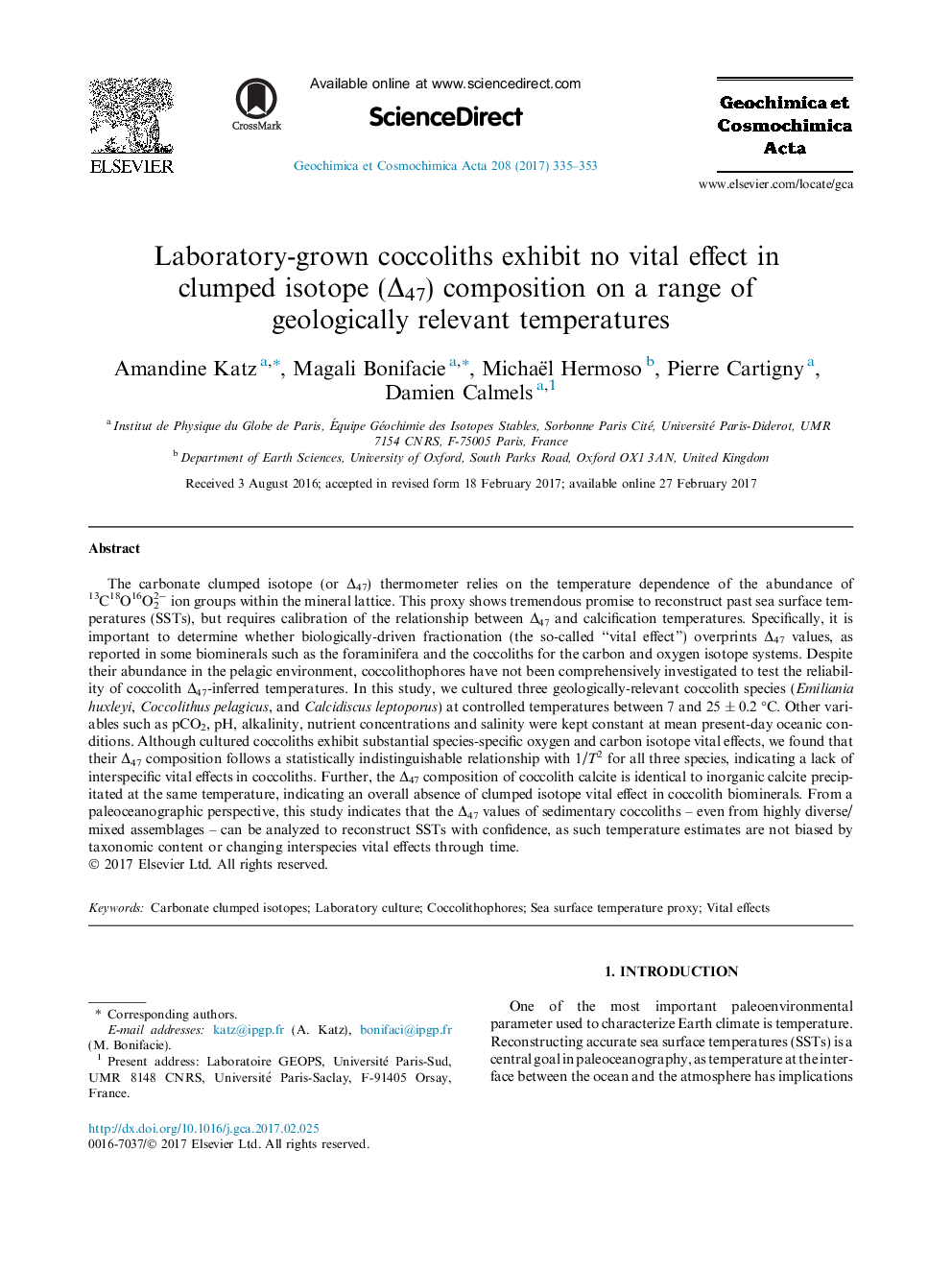| Article ID | Journal | Published Year | Pages | File Type |
|---|---|---|---|---|
| 5783451 | Geochimica et Cosmochimica Acta | 2017 | 19 Pages |
The carbonate clumped isotope (or Î47) thermometer relies on the temperature dependence of the abundance of 13C18O16O22â ion groups within the mineral lattice. This proxy shows tremendous promise to reconstruct past sea surface temperatures (SSTs), but requires calibration of the relationship between Î47 and calcification temperatures. Specifically, it is important to determine whether biologically-driven fractionation (the so-called “vital effect”) overprints Î47 values, as reported in some biominerals such as the foraminifera and the coccoliths for the carbon and oxygen isotope systems. Despite their abundance in the pelagic environment, coccolithophores have not been comprehensively investigated to test the reliability of coccolith Î47-inferred temperatures. In this study, we cultured three geologically-relevant coccolith species (Emiliania huxleyi, Coccolithus pelagicus, and Calcidiscus leptoporus) at controlled temperatures between 7 and 25 ± 0.2 °C. Other variables such as pCO2, pH, alkalinity, nutrient concentrations and salinity were kept constant at mean present-day oceanic conditions. Although cultured coccoliths exhibit substantial species-specific oxygen and carbon isotope vital effects, we found that their Î47 composition follows a statistically indistinguishable relationship with 1/T2 for all three species, indicating a lack of interspecific vital effects in coccoliths. Further, the Î47 composition of coccolith calcite is identical to inorganic calcite precipitated at the same temperature, indicating an overall absence of clumped isotope vital effect in coccolith biominerals. From a paleoceanographic perspective, this study indicates that the Î47 values of sedimentary coccoliths - even from highly diverse/mixed assemblages - can be analyzed to reconstruct SSTs with confidence, as such temperature estimates are not biased by taxonomic content or changing interspecies vital effects through time.
